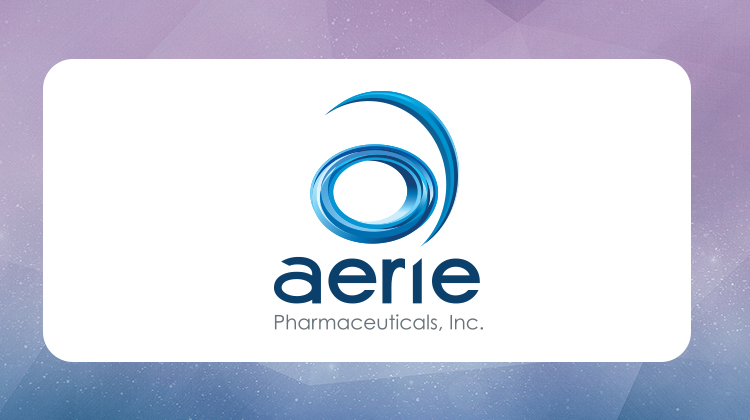Déjà vu: Aerie Announces Mercury 2 Results, Stock Jumps

With the recent report of successful top-line Phase III results of its fixed-dose glaucoma candidate Roclatan, Aerie Pharmaceuticals Inc. has seen its stock price soar into rarified air, reaching an all-time high above $55, about 38% higher than before the announcement – and even those pre-announcement prices were in record territory for the stock.
If the company continues to see positive safety results for Roclatan in the ongoing 12-month clinical trial, it expects to file a New Drug Application (NDA) for the agent in the first half of next year, says chairman and CEO Vincente Anido Jr., PhD.
For Aerie, it’s all in the timing. A day after announcing the top-line 90-day results, the company launched a public stock offering, raising $125 million in all, including $75 million through a public stock offering at $53.75 a share – a bump-up of $25 million over the previously announced offering. It raised the remaining $50 million through an “at-the-market” program with Cantor Fitzgerald & Co.
The top-line Phase III 90-day Mercury 2 trial achieved its primary efficacy endpoint of demonstrating statistical superiority over each of its components, including Aerie product candidate Rhopressa (netarsudil ophthalmic solution) 0.02% and latanoprost, all of which were dosed once daily. The intraocular pressure (IOP)-lowering effect of Roclatan was 1 to 3 mm Hg greater than monotherapy with either latanoprost or Rhopressa throughout the duration of the study. The study evaluated patients with maximum baseline IOPs ranging from 20 to 36 mm Hg.
Other key Mercury 2 endpoints achieved are:
- Roclatan reduced mean diurnal IOPs to 16 mm Hg or lower in 56% of patients, significantly higher than in the two comparator arms.
- 90-day discontinuation rates were 9.8% for Roclatan and 10.6% for Rhopressa, the lowest experienced across all Phase III trials of both agents.
- The most common adverse event was sporadic and mostly mild hyperemia in nearly 55% of patients. No drug-related serious or systemic adverse events for any of the treatment groups were reported.
The Mercury 2 results were in line with the 12-month safety results of Roclatan in last year’s Mercury 1 trial. “With this positive Mercury 2 data, we now have two successful pivotal trials for Roclatan,” says Dr. Anido. “The top-line efficacy results demonstrated in Mercury 2 are consistent with Mercury 1, confirming the potential for Roclatan to become the most efficacious IOP-lowering therapy to enter the market, if approved.”
For investors, the sequence of events around Mercury 2 is like déjà vu all over again, as Yogi Berra would have said. Last September, Aerie filed its NDA for Rhopressa with the FDA, announced the successful Mercury 1 90-day primary efficacy results for Roclatan, and then moved to raise $125 million in public offerings. This time around, the Mercury 2 results were preceded by the announcement that the FDA had accepted the Rhopressa NDA. The timing intervals are almost identical. That Mercury 1 announcement caused Aerie’s stock price to almost double to about $40 a share last fall, around where it had been trading until the Mercury 2 results fired up the latest spike in its stock price.
So if this script holds, Aerie’s stock price should too
